Editorials
‘The Evil Dead’: A Meditation on the Five Elements of Horror
The Evil Dead (1981) is an undisputed horror classic. Whether it’s actually scary, however, is another topic. Of course, what makes a movie scary is subjective. Keeping that in mind, I will focus on some basic tenets of successful horror, inspired by Tim Waggoner’s writing craft book Writing in the Dark: Dread, Terror, Horror, Shock, and Disgust. Waggoner likens these emotional states to the primary colors of an artist’s palette in that they all have their place and benefit from being blended together. But what do all these capitalized terms mean?
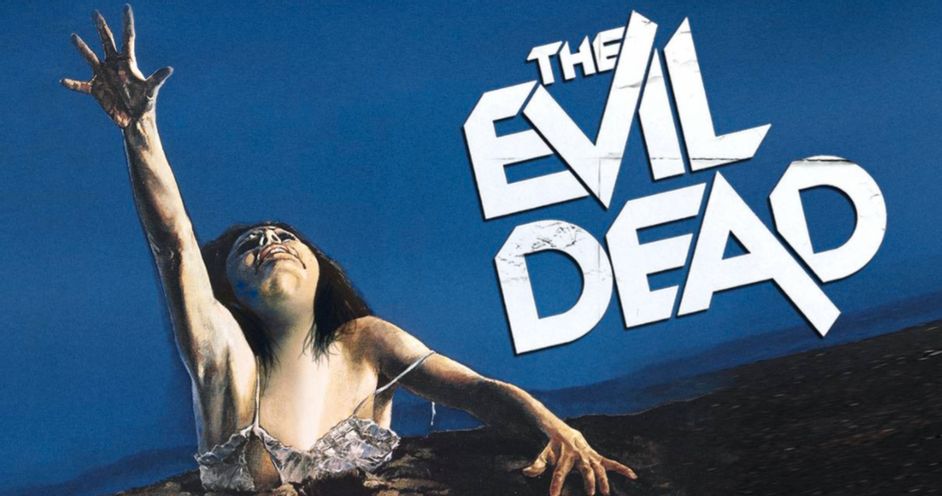
The Evil Dead (1981) is an undisputed horror classic. Whether it’s actually scary, however, is another topic. Of course, what makes a movie scary is subjective. Keeping that in mind, I will focus on some basic tenets of successful horror, inspired by Tim Waggoner’s writing craft book Writing in the Dark: Dread, Terror, Horror, Shock, and Disgust. Waggoner likens these emotional states to the primary colors of an artist’s palette in that they all have their place and benefit from being blended together. But what do all these capitalized terms mean?
Is The Evil Dead a Horror Movie?
I’ll explain each state very briefly. Dread is the feeling of an unknown threat building and building, getting closer and closer. Terror is “the emotional and intellectual reaction to a threat,” which is a bit more complex than Horror. Horror is the immediate reaction to an awful realization. One can think of Terror as dealing with the future implications of a conflict while Horror is the kneejerk reaction. Shock is a malicious surprise to the characters, and hopefully to the audience as well. Lastly, Disgust is a physical feeling sparked by something gross and usually visceral. Now that we have the five emotional tenets of successful scares laid out, we can move onto their places in The Evil Dead.
Dread: Building Suspense from the Start
The first fifty seconds or so of The Evil Dead is from the point of view of an unseen force racing above a body of water. There are unidentifiable sounds. There is quite a bit of fog. We see something bubbling under the water. Then we cut to a close shot of a car containing five young friends, two of them happily singing. But this view only lasts for a couple seconds before we see a different angle, this one watching the car from the woods. We get another tracking shot of the unseen force, which is now racing through the trees. Before we’re even two minutes into the film, a threat is established. The friends are expecting a fun weekend, we’re expecting a series of malicious scenes.
Dread is built further by the “DANGEROUS BRIDGE” sign, leading to the car barely making it over the wooden beams, and the long tracking shot on the way to the cabin. The score becomes high-pitched and eerie, punctuated by a thudding beat later revealed to be a porch swing banging into the house, as we follow the car to the cabin. Suspense rises. We soon see Cheryl’s hand, apparently possessed, drawing a book with a face, followed by her vision of the hatch to the basement rattling and thumping. Later, when the friends play the mysterious tape and learn that the book brought up from the basement was “bound in human flesh and inked in human blood,” our suspicions that something is wrong with the cabin are escalated.
Terror: Contemplating the Unthinkable in The Evil Dead
Ash seems to have the most perspective of the situation and its potential aftermath, by embodying the state of Terror. When Shelly is possessed and attacks Scott and Ash, Ash is frozen in fear. Scott, meanwhile, shows little hesitance throwing his girlfriend into the fire, slicing her wrist, plunging a knife into her back, and yelling at Ash to “Hit her! Hit her! Hit it!” After Shelly is hacked into pieces, courtesy of Scott, Ash asks, “What are we gonna do?” and his friend deadpan replies “We’ll bury her.” Ash mumbles that “we can’t bury Shelly. She’s-she’ a friend of ours.” He clearly realizes the implications of the situation but doesn’t want to accept them, while Scott barrels onward.
The end of the movie is another example of Terror. The sun rises, Linda is headless, Cheryl and Scott have disintegrated, and Ash is alive. He walks out of the cabin, drenched in blood, to the sounds of a victorious score and birds chirping. The horrific events are in the past, in the night, we think . . . until that unseen force from the beginning reappears. It courses through the cabin and rams into Ash. The Terror is not over.
Horror: Immediate Reactions to Danger
Going back to Scott, the way he takes control of the situation with Shelly is indicative of Horror. He realizes that his girlfriend is dangerous and acts to stop her by whatever means necessary. He doesn’t stop to think of the repercussions of chopping his girlfriend into pieces. He only thinks of his survival in the present. His decision to leave the cabin and brave the woods alone also shows a lack of foresight. Since this is a horror movie, Scott pays for his feelings of Horror with his life.
Shock: Jump Scares and Disturbing Surprises
Shock is easy to detect in film, usually in the form of jump scares. An excellent jump scare in The Evil Dead is seen when Linda and Cheryl seem to recover from their possessed states and Ash goes to let Cheryl out of the basement. The background music stops, leaving only the sound of crickets. Ash leans down, key in hand, slowly reaching to unlock the hatch, when Cheryl’s hands burst through the floorboards to seize his neck. Just when we think the danger has abated, it comes back in full force. Another scene that elicits Shock comes much earlier in the film. This scene is notorious, and many members of the cast and crew have expressed remorse for keeping it in the final cut. I am speaking, of course, about the tree rape. We could very well understand that the woods harmed her without seeing branches forcing her into a helpless position and entering her. “It was the woods themselves,” Cheryl cries. “They’re alive, Ashley!” Thank goodness for shadows is all I have to say.
Disgust: Gore and Visceral Repulsion
Perhaps the most easily recognizable state in The Evil Dead is Disgust. The plentiful gore did lead to an X rating in the US and the film’s status as a “video nasty” in the UK, after all. Cheryl stabs Linda’s ankle with a pencil, Shelly chews off her hand, Ash decapitates Linda with a shovel, Ash gouges Scott’s eyes, cockroaches feast on the decaying bodies, etc. I’d say that tree rape also qualifies for Disgust. Think of the splinters!
Of course, as an artist may use all the colors on their palette but still produce a less than mediocre painting, we must ask if The Evil Dead is successful in its goal of scaring the viewer. The dialogue of the movie is less than stellar. Just look at the opening scene in the car:
CHERYL: You mean nobody’s seen this place yet?
SCOTT: Well, not yet.
ASHLEY: Well, it might not be that bad.
LINDA: No.
ASHLEY: Actually, it might be kind of nice.
LINDA: Yeah.
Not only is this snippet poorly written, but it also sounds stilted when performed.
The Evil Dead: A Horror Classic with Comedic Undertones
The Evil Dead has a fair share of both traditional horror aspects and those belonging to traditional comedy. The five emotional states of horror laid out by Tim Waggoner are certainly evident in the film, and although I’d say that the film leans toward horror, I do understand why some people put it firmly in the horror-comedy class. When I first watched it, I was unsettled and scared. With multiple viewings, I saw more of the comedic traits. There’s a great balance of the two, even though the team was most likely going for straight horror. With Evil Dead II: Dead by Dawn, it is clear that they embraced the comedic aspects of the first attempt and strove for a true horror-comedy.

Editorials
Is ‘Scream 2’ Still the Worst of the Series?
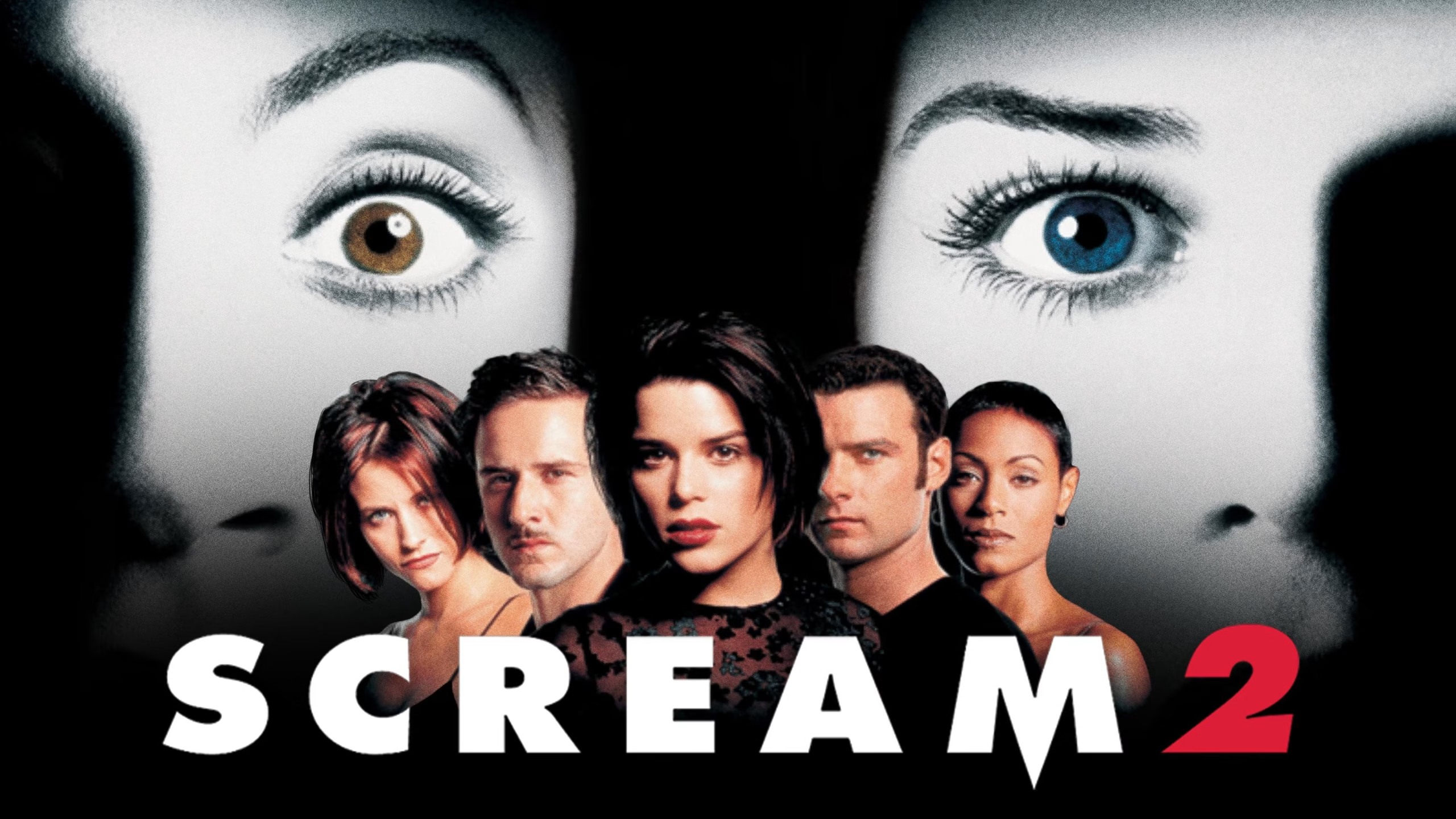
There are only so many times I can get away with burying the lede with an editorial headline before someone throws a rock at me. It may or may not be justified when they do. This article is not an attempt at ragebaiting Scream fans, I promise. Neither was my Scream 3 article, which I’m still completely right about.
I do firmly believe that Scream 2 is, at the very least, the last Scream film I’d want to watch. But what was initially just me complaining about a film that I disregard as the weakest entry in its series has since developed into trying to address what it does right. You’ve heard of the expression “jack of all trades, master of none”, and to me Scream 2 really was the jack of all trades of the franchise for the longest time.
It technically has everything a Scream movie needs. Its opening is great, but it’s not the best of them by a long shot. Its killers are unexpected, but not particularly interesting, feeling flat and one-dimensional compared to the others. It has kills, but only a few of them are particularly shocking or well executed. It pokes fun at the genre but doesn’t say anything particularly bold in terms of commentary. Having everything a Scream movie needs is the bare minimum to me.
But the question is, what does Scream 2 do best exactly? Finding that answer involves highlighting what each of the other sequels are great at, and trying to pick out what Scream 2 has that the others don’t.

Scream 3 Is the Big Finale That Utilizes Its Setting Perfectly
Scream as a series handily dodges the trap most horror franchises fall into: rehashing and retreading the same territory over and over. That’s because every one of its films are in essence trying to do something a little different and a little bolder.
Scream 3 is especially bold because it was conceived, written, and executed as the final installment in the Scream series. And it does that incredibly well. Taking the action away from a locale similar to Woodsboro, Scream 3 tosses our characters into the frying pan of a Hollywood film production. Despite its notorious number of rewrites and script changes (one of which resulted in our first solo Ghostface), it still manages to be a perfect culmination of Sidney Prescott’s story.
I won’t repeat myself too much (go read my previous article on the subject), but 3 is often maligned for as good a film as it turned out to be. And for all of its clunkier reveals, and its ghost mom antics, it understands how to utilize its setting and send its characters off into the sunset right.
Scream 4’s Meta Commentary Wakes Scream from a Deep Sleep
As Wes Craven’s final film, Scream 4 has a very special place in the franchise. It was and still is largely adored for bringing back the franchise from a deep 11-year sleep. With one of the craziest openings in any horror film, let alone a Scream film, it sets the tone for a bombastic return and pays off in spades with the journey it takes us on.
Its primary Ghostface Jill Roberts is a fan favorite, and for some people, she is the best to ever wear the mask. Its script is the source of many memorable moments, not the least of which is Kirby’s iconic rapid-fire response to the horror remakes question. And most importantly, it makes a bold and surprisingly effective return for our main trio of Sidney, Dewey, and Gale, whose return didn’t feel trite or hammy when they ended up coming back to Woodsboro for more.
Craven’s work on 4 truly understands the power its predecessors had exerted on the horror genre, both irreverent in its metacommentary and celebratory of the Scream series as a whole. The film is less of a love letter to the genre and more of a kicking down of the door to remind people what Scream is about. 4’s story re-established that Scream isn’t going away, no matter how long it takes for another film, and no matter how many franchises try to take its place.
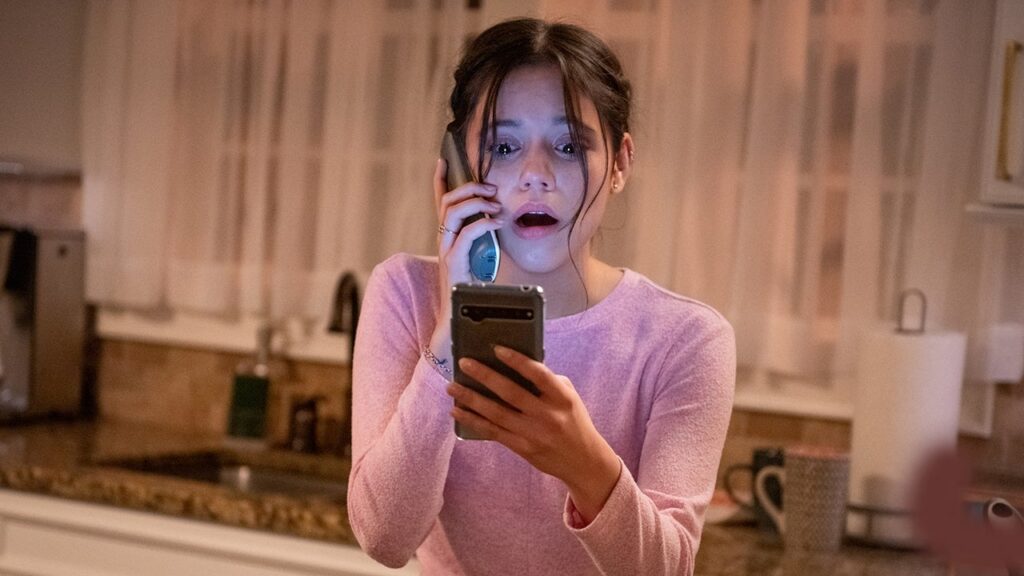
Scream 5 & 6 Is Radio Silence’s Brutal and Bloody Attitude Era
Put simply, Scream 5 and 6’s strong suit was not its characters. It was not its clever writing. The Radio Silence duology in the Scream series excelled in one thing: beating the hell out of its characters.
Wrestling fans (of which there is an unsurprising amount of crossover with horror fans) will know why I call it the Attitude Era. Just like WWE’s most infamous stretch of history, Radio Silence brought something especially aggressive to their entries. And it’s because these films were just brutal. Handing the reins to the series, Bettinelli-Olpin and Gillet gifted a special kineticism to the classic Scream chase sequences, insane finales, and especially its ruthless killers.
All five of the Ghostfaces present in 5 and 6 are the definition of nasty. They’re unrelenting, and in my humble opinion, the freakiest since the original duo of Stu Macher and Billy Loomis. Getting to hear all the air get sucked out of the room as Dewey is gutted like a fish in 5 was still an incredible moment to experience in theatres, and it’s something I don’t think would have happened if the films were any less mean and any less explosively violent.
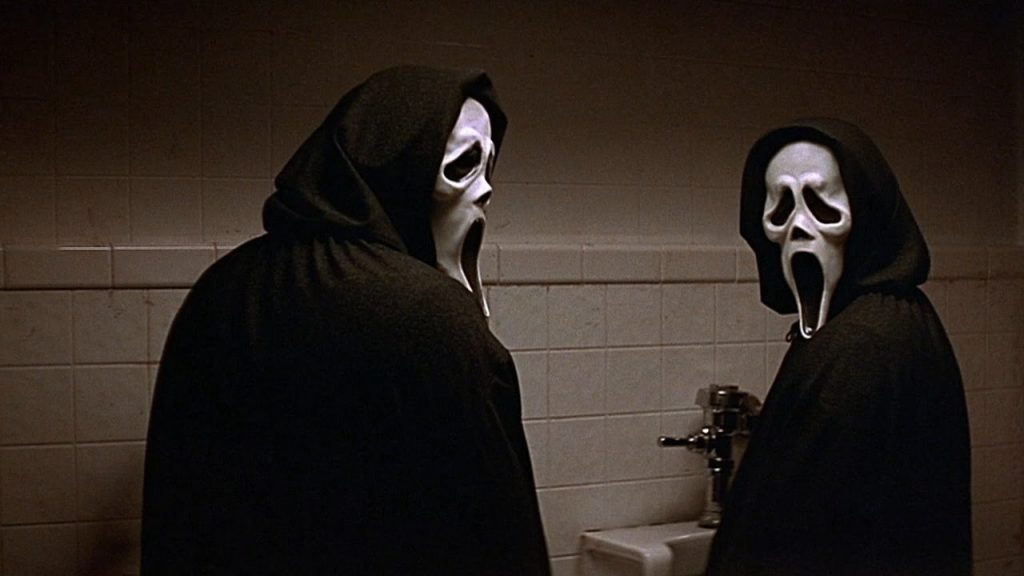
So, What Does Scream 2 Do Best Exactly?
So now, after looking at all these entries and all of their greatest qualities, what does Scream 2 have that none of the others do? What must I concede to Scream 2?
Really great character development.
Film is a medium of spectacle most of the time, and this is reflected in how we critique and compliment them. It affects how we look back on them, sometimes treating them more harshly than they deserve because they don’t have that visual flash. But for every ounce of spectacle Scream 2 lacks, I have to admit, it does an incredible job of developing Sidney Prescott as a character.
On a rare rewatch, it’s clear Neve Campbell is carrying the entirety of Scream 2 on her back just because of how compelling she makes Sidney. Watching her slowly fight against a tide of paranoia, fear, and distrust of the people around her once more, watching her be plunged back into the nightmare, is undeniably effective.
It’s also where Dewey and Gale are really cemented as a couple, and where the seeds of them always returning to each other are planted. Going from a mutual simmering disrespect to an affectionate couple to inseparable but awkward and in love is just classic; two people who complete each other in how different they are, but are inevitably pulled back and forth by those differences, their bond is one of the major highlights throughout the series.
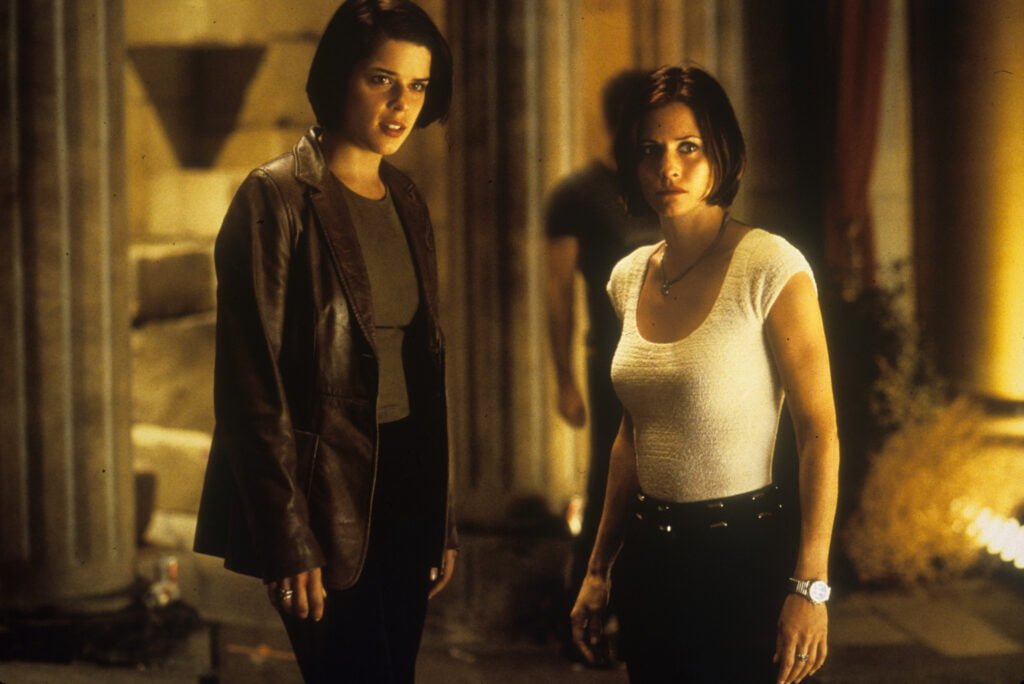
Maybe All the Scream Films Are Just Good?
These three characters are the heart of the series, long after they’ve been written out. I talk a big game about how Scream 3 is the perfect ending for the franchise, but I like to gloss over the fact that Scream 2 does a lot of the legwork when it comes to developing the characters of Dewey, Gale, and especially Sidney.
Without 2, 3 just isn’t that effective when it comes to giving Sidney her long deserved peace. Without 2, the way we see Sidney’s return in 4 & 5 doesn’t hit as hard. All of the Scream movies owe something to Scream 2 in the same way they owe something to the original Scream. I think I’ve come to a new point of view when it comes to the Scream franchise: maybe there is no bad entry. Maybe none of them have to be the worst. Each one interlinks with the others in their own unique way.
And even though I doubt I will ever really love Scream 2, it has an undeniable strength in its character writing that permeates throughout the whole franchise. And that at the very least keeps it from being the worst Scream film.
Editorials
The Halloween Franchise Peaked With H20 Here’s Why
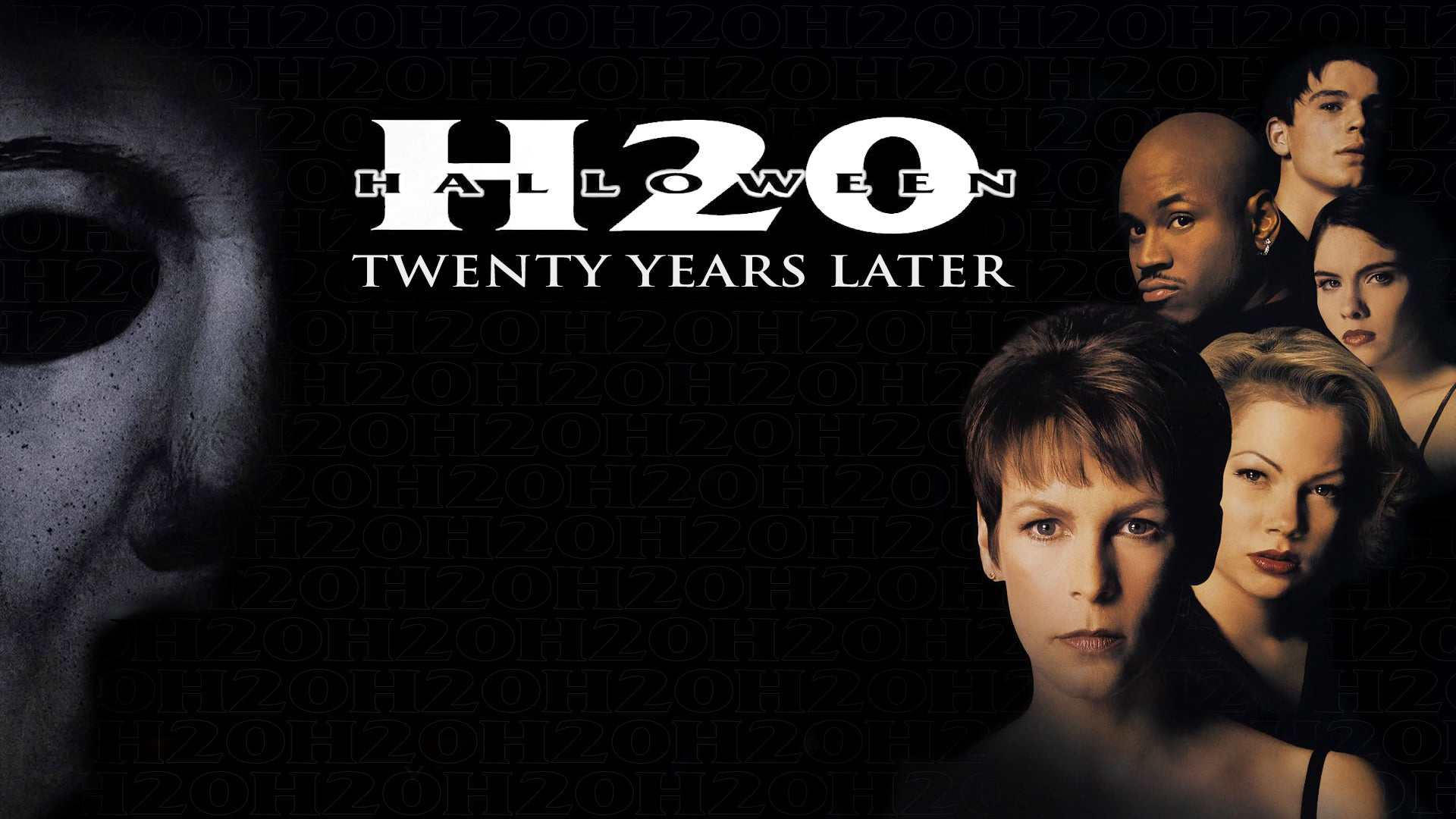
I’m going to begin this conversation with a sort of insane thought. Halloween as a franchise maybe should have ended with its first film.
That’s not to say there’s no value in the Halloween films. Much to the contrary, I like the first three films a lot. I recommend Halloween 3: Season of the Witch to people an annoying amount; I even try to watch it a few times every October to keep the vibes up. And as you already know from clicking on this article, I enjoy Halloween H20: 20 Years Later quite a bit.
I’ve even softened up on the Rob Zombie remake duology over the years. I don’t like them, but it’s like getting flowers, I can still appreciate them. However, Halloween, as a series, has long suffered from its own success. And sometimes, it feels like it’s just going to keep suffering.
HALLOWEEN’S FIRST BOLD CHOICE AFTER 16 YEARS OF WAITING
It’s easy to forget that John Carpenter’s original Halloween was effectively the Paranormal Activity of its time. Flipping a cool $70 million and change off of a $300,000 budget, it has had a genuinely immeasurable impact on the cinematic landscape and how horror films are made.
For some, that’s a bad thing. Notoriously, my beloved 3rd entry in the franchise was considered a hard misstep by audiences. Everyone knows the story; the resounding “Where’s Michael?” response to the third entry gunned down Carpenter’s desires to turn Halloween into an anthology series. So, after going into hiding for 5 years, Halloween 4 continued the story of Michael in 1988.
And then it just kept going.
As the years went on, it became progressively harder and harder to innovate, resulting in some very odd plotlines and tones. Which is why Halloween H20 is where the franchise peaked. Because it had a rare essence to it. It had guts.
It was willing to actually kill the series once and for all, even if it was impossible to do so.
EVIL DOESN’T DIE TONIGHT, THE CONTRACT SAYS SO
Before David Gordon Green’s reboot trilogy brought Laurie back as a Sarah Connor style badass, H20’s pre-production had reinvented Strode to usher in the 20th anniversary of the first film. She went from a resilient young woman into a traumatized survivor running from her past.
The original concept for Halloween H20 involved a substance abusing Laurie Strode trying to get clean so she could die with dignity against an escaped Michael. In a turn of events, she would find the will to live and kill him once and for all. It was a concept Jamie Lee Curtis was passionate about, understandably so. Laurie wasn’t the first final girl, but she was the codifier for that ideal, in a way Jess Bradford and Sally Hardesty before her weren’t. It would have made for a harrowing exploration of what was debatably the most important final girl ever.
That isn’t what happened.
There is an infamous video from a Q&A panel with Jamie Lee Curtis where she explains that the blame for Michael surviving H20 lies primarily with one man: the late great Moustapha Akkad. Akkad was famous for his business acumen, but that desire to see the Halloween franchise make bankroll had ultimately stolen away Laurie’s triumphant victory over Michael.
You see, Akkad had written a clause into the contracts surrounding the film. A clause that she could not, in no uncertain terms, kill Michael Myers. Michael would live, no matter what Laurie did. But thanks to the meddling mind of Scream creator Kevin Williamson, who had been brought on to work on the screenplay for H20, Laurie did get her vengeance in a way.
LAURIE STRODES RETURN DONE RIGHT
The actual H20 follows Laurie Strode in hiding years after Halloween 2, ignoring the events of the sequels. She’s the headmistress of a boarding school, living under a fake name far from Haddonfield with her son. But still, she can’t let go of that Halloween night. She sees Michael’s face, The Shape, everywhere. She can barely stomach talking about what happened. But when Michael kills Dr. Loomis, nurse Marion Chambers, and then finds her, Laurie is forced to face her greatest fear once and for all.
And she does. After a prolonged chase and fight on the grounds of the school, she refuses to let a wounded Michael be taken into custody. Stealing a cop’s gun and an ambulance, Laurie runs Michael off a cliff and pins him against a tree with the vehicle. She shares a brief moment with him, inscrutable eyes reflecting Michael’s. They could be expressing a number of possible emotions. Is it empathy? Hatred? Pity? Fear leaving her for the final time?
Regardless of what it is, she’s done feeling it. With a hefty swing, she decapitates him with a fire axe, ending Michael for the last time. It’s over.
Roll credits. Audience cheers. The world is healing.
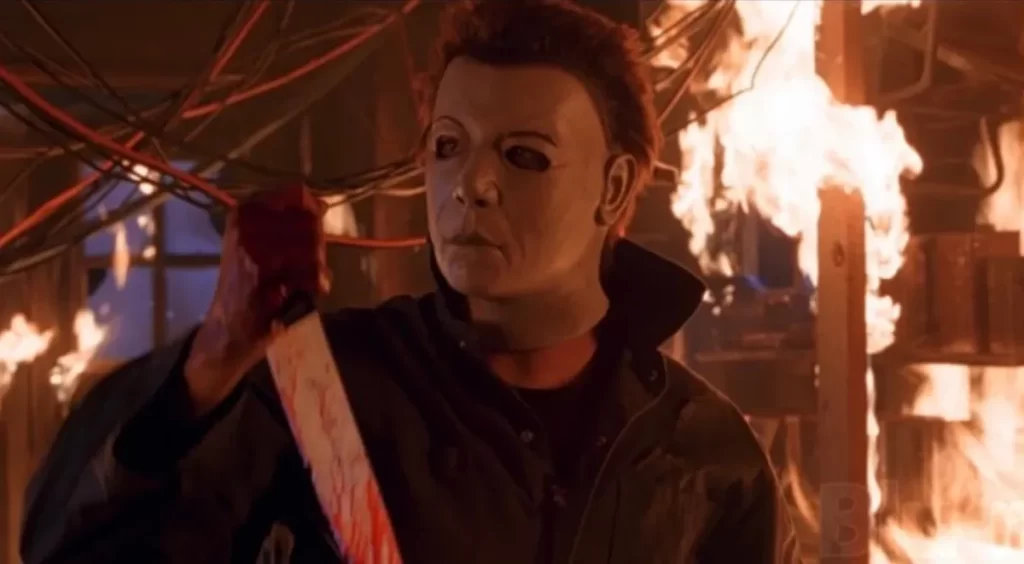
AND THEN HALLOWEEN: RESURRECTION HAPPENS
Yes, and then Halloween: Resurrection happens. Laurie is killed in the first few minutes, revealing that Michael pulled the old bamboozle switcheroonie in the previous film. She had actually just killed an ambulance driver that Michael had put the mask on. Williamson’s trick of making both Laurie and the audience believe they had killed Michael worked. But that same trick curled a finger on the monkey’s paw and led to what is definitively the worst film in the franchise.
A proto-internet streamer subplot. The kid from Smart House is there for some reason. Busta Rhymes hits Michael Myers with the Charlie Murphy front kick from that one Dave Chappelle sketch about Rick James.
Roll credits. The audience boos. Everyone who spent money on it feels like they’re being stamped to death by horses.
HALLOWEEN AS A FRANCHISE IS TERRIFIED OF ENDINGS
And this is why I say that Halloween H20 is probably the best we’re going to get out of the series, maybe ever. It is a series that, at its core, has had producers terrified of endings since even Halloween 2. Carpenter never intended there to be a sequel, or any follow ups for that matter. That was mostly the work of producer Irwin Yablans, who pushed hard to continue the story of Michael. And then, eventually, it was the work of every other producer who demanded they milk Halloween for all its worth.
H20 is a film that is antithetical to that idea. When watched as intended, ignoring Resurrection, it’s fantastic. As the end of Laurie and Michael’s story, one that shows evil is weak without fear to bolster it, it is pretty much the perfect finale. Hot off the heels of Scream’s success in 1996, H20 is often talked about as an attempt to cash in on the meta-horror craze of the 90s and early 2000s. The way people discuss it, you would think it was supposed to be a tongue-in-cheek slasher that made fun of itself and Halloween’s legacy. But in reality, aside from its humor, it ends up being quite reflective and thoughtful of that legacy.
It’s not spiteful of the films that came before it because it ends by tricking the audience. It’s what that trick represents, boldly spitting in the eye of Halloween being held prisoner for money. Mocking Halloween being stuck in an eternal cycle of rinsing and repeating the same events. It doesn’t care about franchising or longevity; it cares about telling a good story and letting its hero rest. It’s respectful to Carpenter’s creation in a way that other attempts to continue the series simply weren’t.
H20 TELLS AN ENDING, HALLOWEEN ENDS TRIES TO SELL YOU ONE
It begs the question: why does H20 work here in how it ends the series, but Halloween Ends doesn’t?
All of Ends biggest issues stem from the fact that, unlike H20, it’s trying to sell you an ending instead of making one that feels right. The maudlin closer it gives doesn’t feel real. It doesn’t feel true to the Laurie it shows us, or any other iteration of the character for that matter. It doesn’t feel genuinely emotional in any regard.
And that’s because Ends as a whole doesn’t have the spirit that H20 does. Ends is, first and foremost, a highlight reel reminding you of how cool Halloween is instead of understanding why any of its previous entries were effective. From its marketing to its incredibly clunky climax, it feels like it’s an advertisement for never letting go of Halloween, even when it should have been done a while ago. And that’s just the wrong lesson to leave on.
JANET LEIGH’S CAMEO IN H20 SPEAKS VOLUMES
Halloween H20 has a pretty famous cameo from Janet Leigh in it, an OG scream queen and the real-life mother of Jamie Lee Curtis. In it, they have a heart-to-heart as fictional characters Laurie Strode and Norma Watson. It’s made more impactful when you realize it was Leigh’s penultimate film performance, and her final performance in a horror film.
The moment serves as a cute in-joke on their real-life relationship, but more than that, it foreshadows the film’s ending. Norma urges Laurie to move past her fear, to relish her future as a survivor instead of being caught up in the past and reliving the same night over and over again.
I find this scene even more poignant now, seeing how neatly it reflects on what has happened to Halloween as a franchise in the years since the original, and especially since H20. It’s a series that got stuck in trying to continue the same story and just got progressively worse at it. In some way, it feels like it’s urging us to make a choice. No matter how deep a legacy of fear may be, it must come to an end at some point. There is no need to cling to the same stories over and over. We can enjoy them for what they are without returning to them.
No matter what the future of the Halloween franchise is, only a viewer themselves can choose where the story ends. It doesn’t matter how many times the studio brings him back, you have to make the choice. Only you decide when it ends. And for my money, H20 is the best ending you can ask for.






















